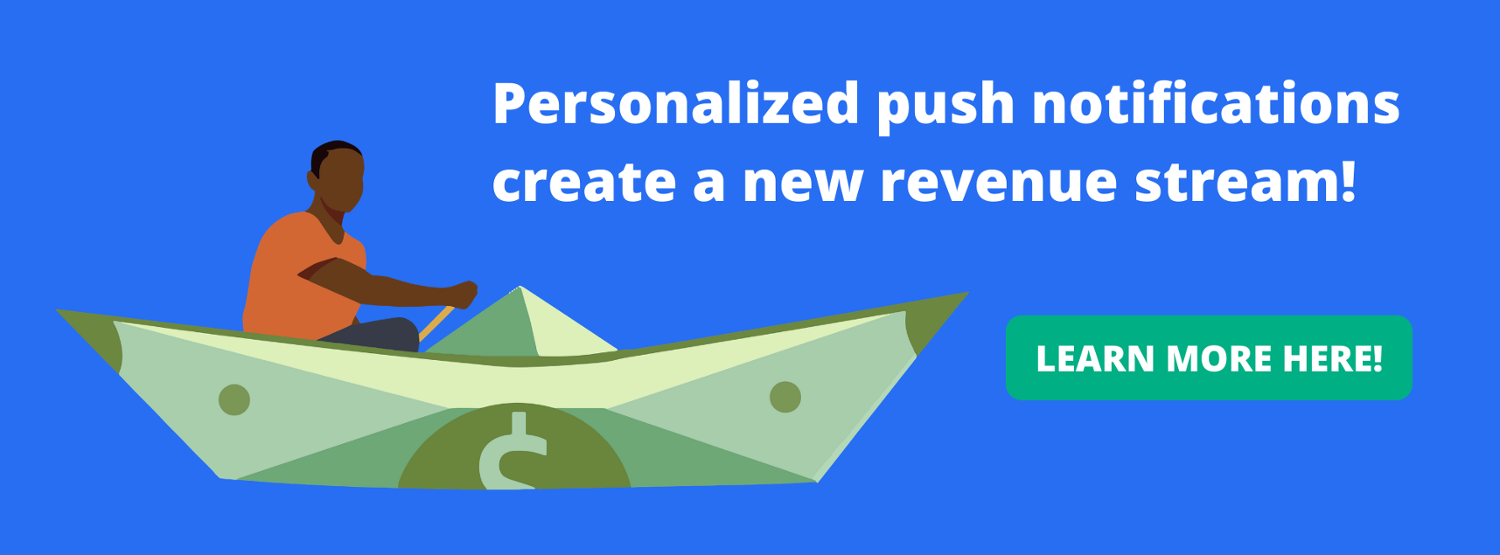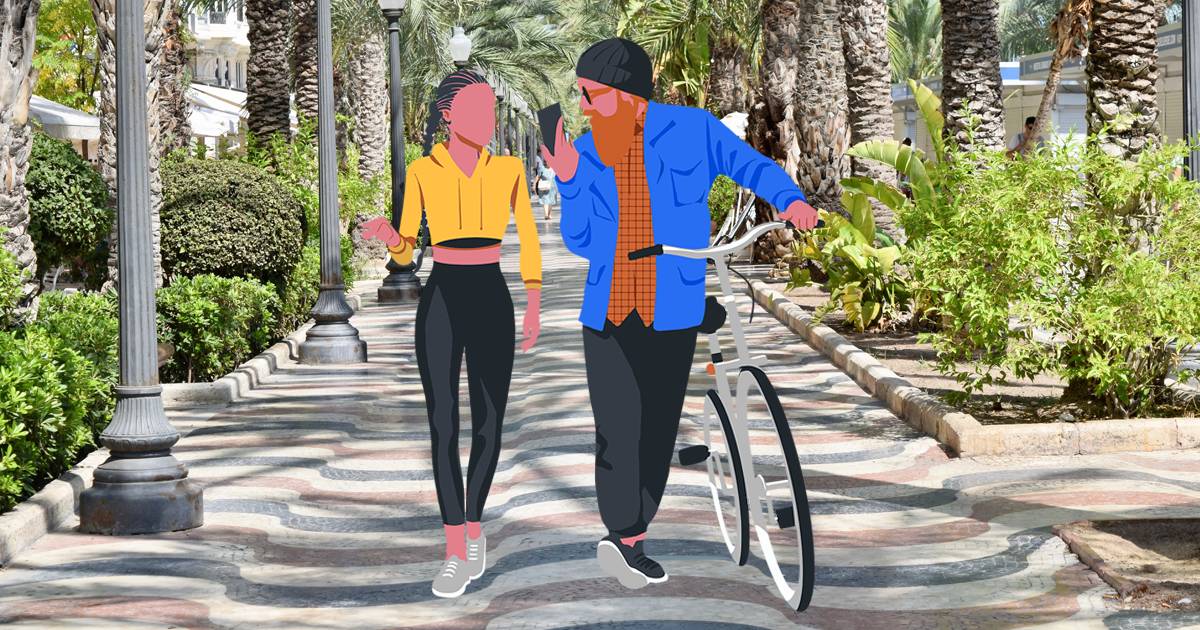Rich push notifications take one of the most valuable messaging formats — standard push notifications — and make them even more engaging.

With rich push notifications, publishers and advertisers can reach consumers directly with brief bursts of content that include images, GIFs, and links to videos.
Here’s what you need to know about rich push notifications.
What are rich push notifications?
Push notifications are short messages that pop up on people’s mobile devices and desktop browsers. They can include a headline, brief description, link, and company logo. Rich push notifications take this format one step further with capabilities to include rich media formats, such as images, GIFs, videos, and even audio files.
Specifically, here are the formats enabled on different mobile devices:
- iOS rich push notifications
- Images (JPEG, PNG, GIF)
- Videos (MPEG, MPEG2, AVI, MP4)
- Audio (MP3, M4A, WAV, AIFF)
- Android rich push notifications
- Images (JPEG, PNG)
Mobile rich push notifications might also include interactive elements such as clickable responses, providing publishers and advertisers with valuable information about their consumer experiences.
What are rich push notifications used for?
Publishers and advertisers can use rich push notifications in a variety of ways.
For publishers
Publishers can use rich push notifications to:
- Drive traffic back to their website across mobile and desktop devices
- Engage subscribers with personalized content, including articles, events, and localized updates
- Send real-time notifications about trending or newly published stories
- Retarget readers with relevant subscription and membership offerings
- Increase revenue by monetizing push notifications
For advertisers
Advertisers can use rich push notifications to:
- Launch ads that reach built-in audiences of relevant readers
- Build brand awareness across a growing, direct-to-consumer channel
- Drive clicks and conversions through bite-sized media placements

Why are rich push notifications important?
First, it’s important to understand why push notifications are important. Over 70% of consumers have already enabled push notifications, opting to receive real-time alerts from their favorite publishers and media outlets. According to recent study from Mantis Research and Jeeng, 53% of subscribers now want push notifications for breaking news, up from 27% the previous year. Almost 50% will also accept personalized ads in push notifications, up from 19% the previous year.
Push notifications are also opt-in, so you know you’re reaching people who are interested in your content. And they’re delivered directly to the consumer. So you know you’re reaching people at just the right time in just the right place. Also, unlike social posts, push notifications won’t get lost in people’s feeds and thrown around by algorithms. They’ll show up right on your users’ screens, guaranteeing 100% impressions.
Now, let’s look at why rich push notifications, in particular, are so important for publishers and advertisers.
For publishers
Publishers can build on their standard push notifications by adding rich media that captures people’s attention. As Gravitec reported, including rich media in push notifications can increase clickthrough rates by 5%.
A sports publisher, for example, might send a rich push notification alerting readers about updates to a live game, and with rich media capabilities, they can include an image or video clip of a highlight from the play. Or a food publisher might send a notification about a new recipe and include a video on how to get started.
For advertisers
The better push notifications are for publishers, the better they are for advertisers, too. Advertisers can launch ads in rich push notifications, reaching audiences directly with personalized, eye-catching content.
A beauty & lifestyle publisher, for example, might deliver a rich push notification about a new virtual event in the industry. A fashion brand that sponsors the event can include a relevant product ad within the notification, complementing the publisher’s content and reaching readily engaged audiences. E-commerce marketers can also use rich push notifications to remind customers about abandoned shopping carts, special offers and discounts, and newly published content of their now, such as from a blog.
What are real-life examples of rich push notifications?
Publishers and advertisers are already seeing success by using rich push notifications to reach their audiences directly and generate engagement.
With this rich notification on desktop, for example, Israel Unwired was able to alert readers about a new announcement from President Biden. It even includes a thumbnail of the video in the notification, so users get a better idea of what they’re clicking to see.
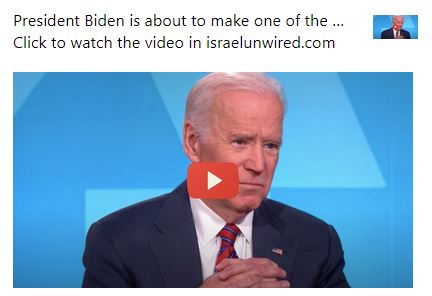
And this rich notification alerts readers about a sensational viral video, also including a clickable thumbnail and teaser for the content on the publisher’s website.
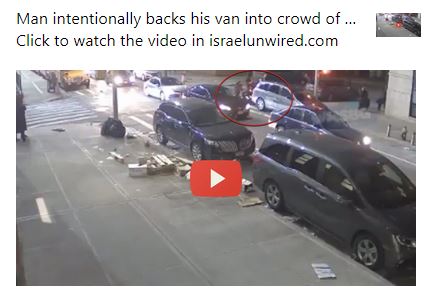
Compare these examples to a regular push notification from The New York Times. While snappy and informative, they don’t include rich media like images and videos.
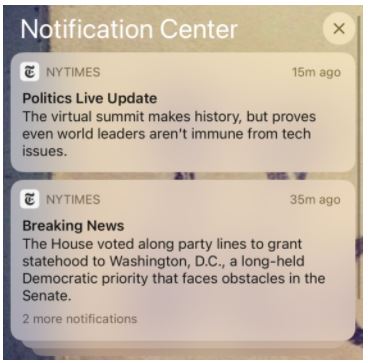
What are best practices for using rich push notifications?
It’s important for publishers and advertisers to understand best practices and successful strategies for making the most of their rich push notifications.
For publishers
Publisher best practices for rich push notifications include:
- Try using JPEG or PNG images. Both of these images formats work on iOS and Android, increasing your ability to reach more consumers.
- Keep copy brief and actionable. Avoid overwhelming readers with too much content — or having your copy cut short — by using quick and effective messaging. Also, make sure you get your point across the copy in case the image or video fails to load.
- Create unique audience segments. Use first-party data to like email addresses to target audiences based on certain categories, such as interests, behaviors, and content preferences.
For advertisers
Advertiser best practices for rich push notifications include:
- Prepare your landing pages. Once consumers see or click on your ad, you want to meet them with engaging and informative landing pages that foster a seamless experience.
- Launch ads at the right time. Use data to reach consumers when they’re most active on their devices and ready to consume new content. Remember to consider different time zones for global audiences, too.
- Automate your ad buys. Use programmatic ad buying platforms to automate the targeting, personalization, and distribution process, so you can focus on creating eye-catching, media-rich push notification ads.
